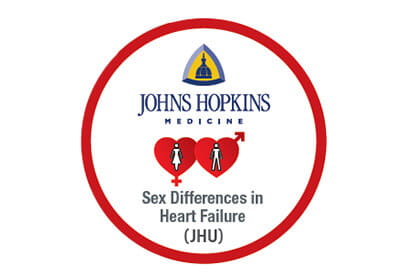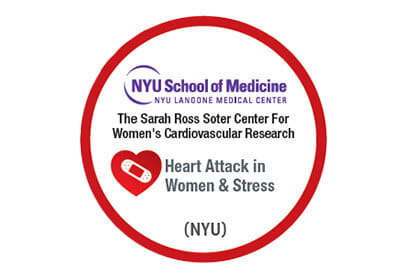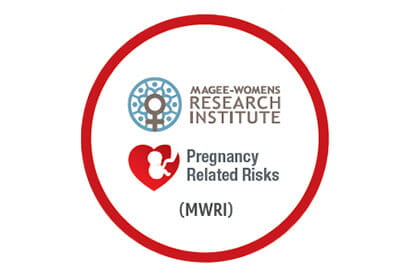Go Red for Women Strategically Focused Research Network
2016 to 2021
AHA's Investment 2014-2019
$15 MILLION IN RESEARCH | $3.7 MILLION TO EACH CENTER






SOTER COLLABORATE INITIATIVE | $1 MILLION IN COLLABORATIVE RESEARCH
Since 2017, four collaborative projects were awarded by the additional funding from Sally Ross Soter to further address women's cardiovascular health that goes beyond the scope of the individual center projects.
BY THE NUMBERS
- 217 publications to date, an average of 43 per Center
- $52M in NIH funding since the start of Network including 2 NIH Career Development Awards
- $4.4M AHA Renewal Funding by Sarah Ross Soter to the Soter Center for Women’s Cardiovascular Research at NYU and 5 AHA Strategic Collaborative and Renewal Awards directly resulting from SFRN projects to date
- Collaborations and co-authorships between each Center increased five-fold over the duration of the award
Notable Publications

Effects of Inadequate Sleep on Blood Pressure and Endothelial Inflammation in Women: Findings From the American Heart Association Go Red For Women Strategically Focused Research Network, Journal of the American Heart Association, June 2018
Poor quality sleep and symptoms of insomnia in women were associated with higher blood pressure and direct measurements of increased inflammation in endothelial cells, even with adequate sleep duration.

Myocardial Gene Expression Signatures in Human Heart Failure With Preserved Ejection Fraction, Circulation, Jan 2021
Heart failure with preserved ejection fraction (HFpEF) lacks effective therapies. Understanding of the cardiac muscle biology is limited due to the scarce amount of molecular analysis of heart tissue. Further investigation revealed new targets for personalized healthcare and medicine.
Speed Bump

Proceed


Maternal Outcomes Associated With Lower Range Stage 1 Hypertension, Obstetrics & Gynecology, Oct 2018
Under the revised American College of Cardiology and American Heart Association Guidelines, women with stage 1 hypertension were shown to have higher rates of maternal complications such as preeclampsia, gestational diabetes and preterm birth. The increased rate of complications was mitigated by low-dose aspirin, indicating its use as a prophylactic may be beneficial in this group.


Coronary Optical Coherence Tomography and Cardiac Magnetic Resonance Imaging to Determine Underlying Causes of Myocardial Infarction With Nonobstructive Coronary Arteries in Women, Circulation, Feb 2021
The use of multiple imaging tests helped identify the underlying cause of myocardial infarctions (heart attacks) with nonobstructive coronary arteries in women. Understanding the cause will help ensure accurate diagnosis and treatment for secondary prevention.

Total Sitting Time and Sitting Pattern in Postmenopausal Women Differ by Hispanic Ethnicity and are Associated With Cardiometabolic Risk Biomarkers, Journal of the American Heart Association, Feb 2020
Longer sitting patterns in Hispanic women were associated with a higher risk of increased blood sugar and heart disease. Reducing sitting time and engaging in physical activities are encouraged to reduce mortality rate and prevention of heart disease and diabetes
Notable Collaborations
- CUIMC published a joint manuscript with the UCSD in Nutrients to characterize eating pattens, nightly fasting duration, and association with cardiometabolic risks in women.
- NYU and UCSD collaboration lead a paper showing that higher perceived stress, stressful events and distress, and lower resilience were associated with shorter sleep, worse sleep quality, and greater insomnia symptoms, suggesting that sleep
- Network Centers were funded by a partnership with the Research Goes Red initiative and Verily’s Project Baseline to help understand how menopausal weight changes affect cardiovascular health.
- MWRI and University of Iowa (Hypertension SFRN) were awarded an AHA Strategic Collaborative Grant focused on demonstrating the connection between the immune system, high blood pressure, and brain function after pregnancy. Their findings have contributed to a NIH R01 application and a NIH supplemental grant
Speed Bump

Proceed